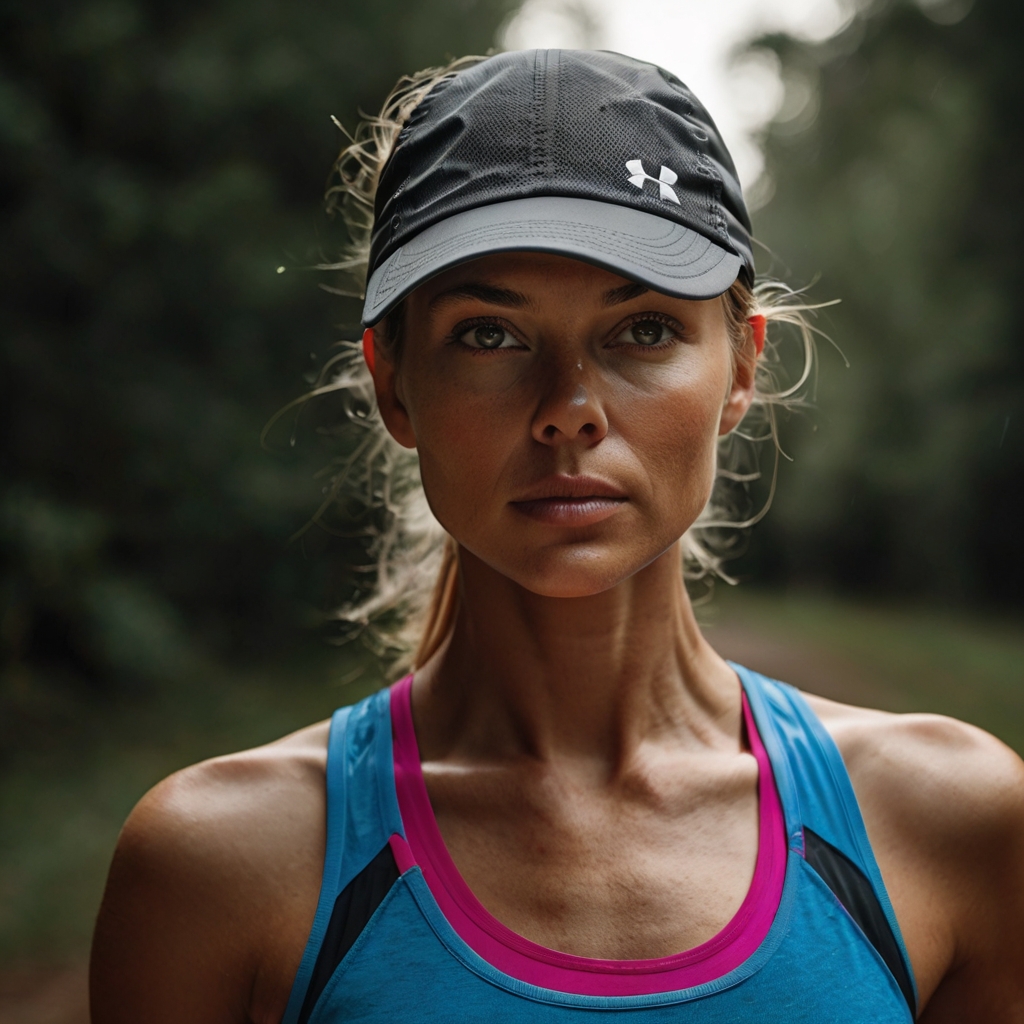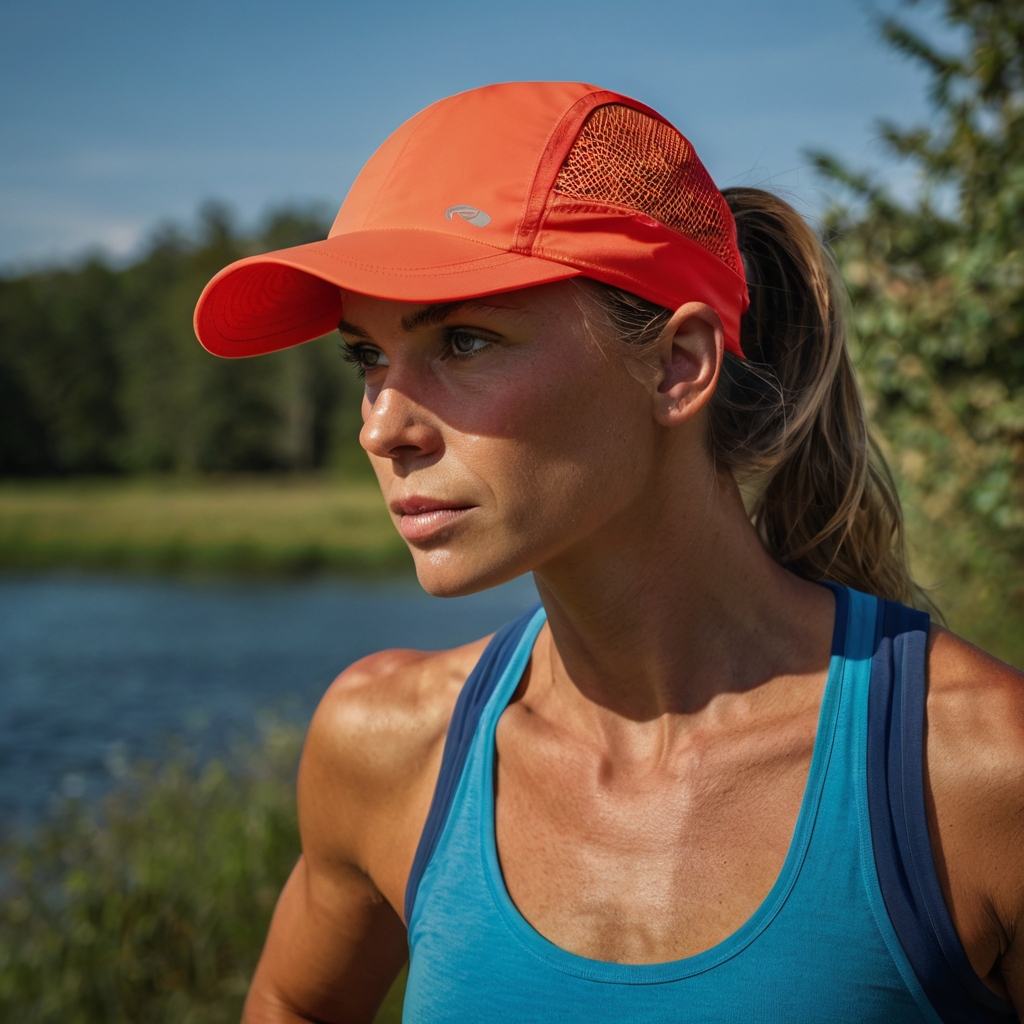Runners face the challenge of dealing with unpredictable weather while pushing for their best performance. The right headwear can transform a running session completely, especially during scorching sun, sudden rain, or freezing temperatures.
Running hats do more than just one job. They wick away moisture during intense sprints and protect you from harmful UV rays on trail runs. These hats have improved by a lot over time. Specialized options for men and women now come with advanced materials and smart designs that work in any season.
This detailed guide gets into the top 10 best running hats for 2024. You’ll find everything from light summer caps to warm winter running hats. Each hat’s unique features tackle specific weather challenges, which helps you pick the perfect one for your runs.

Table of Contents
- 1 Understanding Running Hat Technologies
- 2 Choosing Hats for Different Weather
- 3 Essential Running Hat Features
- 4 Sizing and Fit Guide
- 5 Maintenance and Care Tips
- 6 Here are some FAQs about the best running hats:
- 6.1 What makes running hats different?
- 6.2 Is it better to run with or without a hat?
- 6.3 How to choose a running cap?
- 6.4 Is a hat or visor better for running?
- 6.5 Do running hats keep you cooler?
- 6.6 How do you know if a hat doesn’t fit?
- 6.7 Does running with a hat make you slower?
- 6.8 Are nylon hats breathable?
- 6.9 What is the benefit of running cap?
- 6.10 Should a cap be tight or loose?
- 6.11 What top to wear when running?
Understanding Running Hat Technologies
Modern running hat technology has advanced by a lot. It now uses sophisticated materials and design features that improve performance in all weather conditions. The science of moisture management and temperature regulation are the foundations of these improvements.
Moisture-wicking materials explained
Today’s running hats rely on synthetic fibers. We used polyester blends that excel at moisture management. These materials work through capillary action. They pull sweat away from the skin and spread it across the fabric’s surface so it evaporates quickly. Modern running hats stay lightweight and dry faster – up to four times quicker than conventional materials. This is different from traditional cotton hats that become heavy with absorbed sweat.
Ventilation systems and breathability features
Modern running hats use several ventilation techniques to keep optimal temperature:
- Soft, wide-hole mesh paneling for maximum airflow
- Laser-cut perforations for improved breathability
- Strategic side venting systems for heat release
The placement of these ventilation features is vital. Many designs have mesh panels along the hat’s sides and crown. This allows heat to escape while protecting the areas that need it most.
Latest innovations in running hat design
Recent technological breakthroughs have brought several groundbreaking features to running hat design. The Iso-Chill™ technology provides complete sweat wicking that feels cool consistently. Some advanced models now include ice pocket systems. These specialized compartments hold ice to cool you during intense runs.
Materials keep evolving with specialized fabrics like COOLmatic and Cool Wick. These focus on optimal moisture management while staying structurally strong. The fabrics often come with UPF protection. Their ratings range from 15 to 50+, blocking up to 97% of harmful UV rays.
Premium running hats now include reflective elements and adjustable fit systems for safety and comfort. Many brands use recycled materials in their construction. This shows their steadfast dedication to sustainability without affecting performance.
Choosing Hats for Different Weather
Weather conditions play a big role in choosing the right running hat. Each type of weather brings its own challenges for runners. Knowing how different hat features work helps runners pick the best option that fits their training needs.
Best features for hot weather running
Runners just need hats that keep them cool and handle sweat well in hot weather. The Nathan RunCool Ice Run Hat stands out because of its ice pocket system that lets runners add ice cubes to stay cool during tough runs. Here’s what to look for in a hot weather hat:
- Lightweight mesh panels that boost airflow
- Quick-dry polyester materials that get rid of sweat fast
- Light-colored fabrics that bounce sunlight away
Rain and wind protection considerations
Wet conditions call for water-resistant materials to keep you comfortable. Today’s premium running hats come with fully seam-taped construction and PERTEX® SHIELD technology that gives better weather protection. Great rain-ready running hats have:
- DWR (Durable Water Repellent) coating
- Pre-curved peaks with holes to cut weight
- Adjustable back closures that fight wind
Cold weather running hat essentials
Cold weather runs need special insulation that lets your head breathe. Merino wool is a top choice because it insulates naturally and moves sweat away from your skin. Runners should look for these features when temperatures drop below freezing:
- Double-layer construction at the forehead for warmth
- Extra coverage around ears and neck
- Moisture-wicking synthetic blends that stop sweat from freezing
Temperature affects hat choice by a lot. You might only need a light cap in mild conditions (30-40 degrees), but freezing weather demands serious protection. Think over how wind chill changes how cold it feels and pick materials that match.
Running hat technology has come a long way. You don’t have to choose between staying protected or comfortable anymore. Modern designs now include reflective parts for dark runs, and advanced fabric blends work great in any weather.
Essential Running Hat Features
Quality running hats combine multiple features that work together to improve both performance and safety. Learning about these core elements helps runners pick gear that matches their needs.
UV protection and sun safety
Sun protection is crucial in modern running hats, and advanced fabrics provide superior defense against harmful rays. Today’s premium running hats deliver UPF 50+ protection and block up to 98% of harmful UVA/UVB rays. Quality sun-protective features include:
- Wide brims that measure 2¾ inches to improve face coverage
- Dark underbill design that cuts down glare reflection
- Specialized fabric treatment that maintains UV protection
- Extended neck coverage options that protect trail runners
Reflective elements for visibility
Runners who care about safety will appreciate the reflective elements in modern running hat designs. Latest technology uses millions of microscopic glass beads woven into the fabric to create 360-degree visibility at night. These reflective features help runners stay safe during early morning or evening runs. Placement on front and back sections alerts approaching traffic from all directions.
Adjustability and fit systems
A great running hat balances comfort with security and uses innovative adjustment mechanisms that fit different head sizes and running conditions. Premium running hats typically adjust between 22 and 23⅝ inches in circumference. Modern fit systems come with hook-and-loop closures, elastic drawcords, and specialized ponytail openings that add comfort.
Runners should think over their specific needs at the time they evaluate fit features. Some athletes like precise-fitting caps to train hard, while others prefer a more relaxed fit that works with sunglasses. The best running hats use sweat-wicking bands and ventilation systems that complement adjustment features to keep runners comfortable during long-distance runs.
Sizing and Fit Guide
The right running hat can transform your training session from uncomfortable to enjoyable. A well-fitted hat will boost your performance and protect you in all weather conditions.
How to measure your head size
Getting the right head measurement is vital to select the perfect running hat. Here’s a proven way to measure accurately:
- Wrap a flexible tape measure around the head, approximately 2.5cm above the eyebrows
- Ensure the tape runs slightly above the ears
- Position the tape just below the skull’s occipital bone
- Record the measurement in centimeters
- A string and ruler work well if you don’t have a tape measure
Understanding hat sizing charts
Running hat sizes come in several categories, and most brands give you multiple options. One-size-fits-most hats work for head measurements from 54 to 61 centimeters. Brands offer these standard ranges for a more exact fit:
- Small/Medium: 54-57cm head circumference
- Large/XL: 57-60cm head circumference
- XXL: Available for larger head sizes up to 63cm
Most running caps have adjustable closures like snapbacks, velcro, or elastic bands that let you customize within these ranges. Runners should check their measurements against specific brand size charts for fitted hats since sizes vary between manufacturers.
Common fit issues and solutions
Your running hat should rest comfortably above the eyebrows without blocking your view or creating pressure points. Look for these fit characteristics when picking a running hat:
The space between your head and cap should be about one finger’s width for the best comfort. Here are some solutions if you face fit issues:
- For hats that run slightly large: Insert sweatbands or sizing tape
- For caps that sit too high: Look for models with deeper crown designs
- For ponytail accommodation: Select hats with specialized openings or higher back designs
The larger size often works better when you’re between sizes. Stretch panels or moisture-wicking internal bands can help if you get pressure points during long runs while keeping the hat secure.
Today’s running hats include elastic materials that adapt to different head shapes and maintain their technical features. This technology keeps your hat secure during intense workouts without leaving marks on your forehead.
Maintenance and Care Tips
Your running hat needs proper care to work at its best and last longer. A well-cared-for running hat performs better and protects you better throughout its life.
Cleaning methods for different materials
The best way to care for your running hat depends on the material it’s made from. Most runners find hand washing the quickest way to clean their hats safely.
You’ll need these supplies to clean your running hat:
- Mild detergent or specialized hat cleaner
- Soft-bristled brush
- Clean, cold water
- Microfiber towel
- Gentle soap to spot clean
Here’s how to clean your hat:
- Fill a basin with cold water
- Add a small amount of mild detergent
- Move the hat gently in the solution
- Clean dirty spots with your fingertips
- Rinse really well with cold water
- Pat it dry with a clean towel
A soft brush and mild soap work great for small stains. Cold water works best on synthetic materials. Natural fibers need extra care during cleaning.
Storage recommendations
The way you store your hat substantially affects how long it lasts. Keep your hats in a cool, dry spot away from sunlight. Wall hooks near your door are perfect for daily-use hats and help them keep their shape.
Cedar closets give you the best storage conditions because they naturally cut down moisture and make hats last longer. Look for these features in hat boxes or containers for seasonal storage:
- Good airflow
- Protection from dust
- Moisture control
- Support to keep the shape
Don’t stack your running hats on top of each other – this can mess up their brims and crowns. Use vertical organizers or separate compartments instead to protect each hat’s structure.
Extending hat lifespan
Regular care is vital to make your running hat last. Deal with sweat and stains right away since moisture buildup can damage materials over time.
Make your hat last longer by:
- Switching between different hats to reduce wear
- Cleaning after sweaty runs
- Taking care of stains before they set
- Using the right cleaning products for each material
- Storing them properly between uses
Temperature control matters a lot – never leave your running hats in your car where heat can damage them and mess up their shape. Hats with special features like UV protection or water resistance need manufacturer’s care instructions to stay effective.
The way you dry your hat really matters. Let running hats air dry naturally and avoid direct heat or dryers. Put your hat on a clean surface and stuff the crown with a towel to keep its shape while it dries.
Professional cleaners are great for expensive running hats or ones made with delicate materials. Getting your high-end running caps professionally cleaned and reshaped once a year helps maintain their structure.
Athletes who train in all weather conditions need good running hats. These accessories have evolved beyond simple head coverings into high-tech performance gear. Modern running hats now feature advanced moisture-wicking abilities, targeted ventilation systems, and protection from the elements.
Athletes perform better when they pick hats suited to weather conditions and their unique needs. The right material choice, proper fit, and good care help these performance accessories provide comfort and protection during long runs.
A quality running hat becomes your trusted companion on the road. It shields you from harsh weather and helps you stay visible while boosting performance. Today’s running hats work great for both hot summer days and cold winter sessions. This piece helps runners choose the best headwear that leads to safer and more enjoyable training all year round.

Here are some FAQs about the best running hats:
What makes running hats different?
The best running hats are designed for performance, offering lightweight materials, moisture-wicking fabrics, and excellent breathability. Unlike regular hats, they are often made with quick-dry technology to keep sweat away from your skin and ensure comfort during runs. Additionally, best trail running hats often include features like UV protection and reflective elements for safety.
Is it better to run with or without a hat?
Running with a hat can be beneficial in many ways. The best hats for running provide shade and UV protection, helping to shield your eyes and face from the sun. For colder climates, hats help retain body heat and protect against wind. However, some runners prefer running without a hat for increased ventilation.
How to choose a running cap?
When choosing one of the best running hats, prioritize breathability, lightweight materials, and sweat-wicking properties. Look for adjustable straps for a snug fit, UV protection for sunny runs, and reflective details if running at night. Options like the best running hats for men or best running hats for women often come in various styles to suit different preferences.
Is a hat or visor better for running?
The choice between a hat and a visor depends on personal preference and weather conditions. The best running hats offer full head protection, blocking both sun and sweat, while visors are great for ventilation on hot days. For those who prefer maximum coverage, hats are the better option, especially when running long distances or on trails.
Do running hats keep you cooler?
Yes, the best hats for running are specifically designed to keep you cool. They are made with breathable materials like polyester or nylon that allow airflow and wick away sweat. Best trail running hats often feature mesh panels for additional ventilation, ensuring you stay cool during intense runs.
How do you know if a hat doesn’t fit?
A hat that doesn’t fit will either feel too tight, causing discomfort, or too loose, slipping off while running. The best running hats come with adjustable straps to ensure a snug yet comfortable fit. If you feel pressure around your forehead or experience the hat moving during runs, it may not be the right size.
Does running with a hat make you slower?
Running with a hat does not inherently make you slower. The best running hats for men and best running hats for women are lightweight and designed for performance. By keeping sweat out of your eyes and shielding you from the sun, running hats can enhance comfort, allowing you to perform at your best.
Are nylon hats breathable?
Yes, nylon hats are known for their breathability and lightweight design. Many of the best running hats are made with nylon or polyester because these materials wick away sweat and allow for airflow. This makes nylon hats ideal for running, especially in hot or humid conditions.
What is the benefit of running cap?
A running cap provides several benefits, including sun protection, sweat management, and improved comfort during runs. The best running hats for women and best running hats for men are made to keep sweat from dripping into your eyes and protect your face from UV rays. For trail runners, the best trail running hats also offer protection against debris and branches.
Should a cap be tight or loose?
A running cap should fit snugly but not too tight. The best hats for running come with adjustable straps to ensure a secure fit that doesn’t move during activity. A cap that is too tight may cause discomfort, while a loose cap can slip off while running.
What top to wear when running?
When running, choose moisture-wicking and breathable tops made of polyester or merino wool. Pairing the right top with one of the best running hats will keep you cool and comfortable during your workout. For trail running, lightweight and UV-protective tops complement the best trail running hats perfectly.


